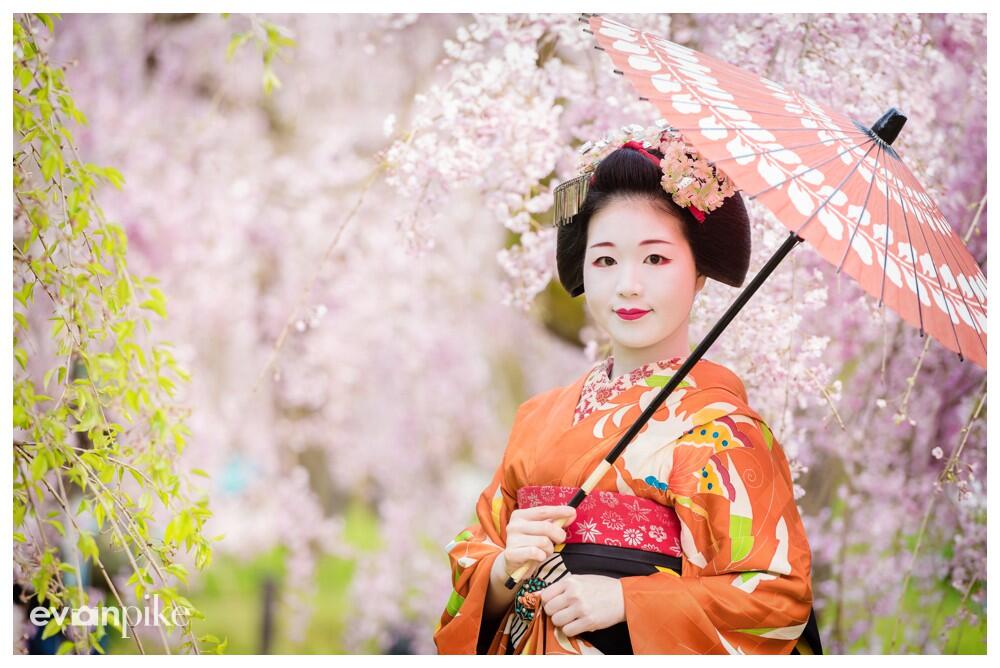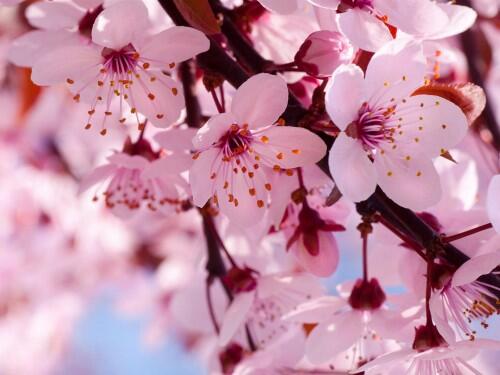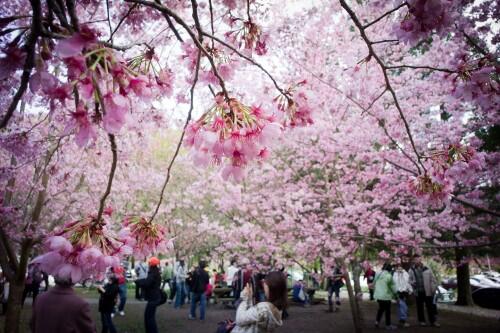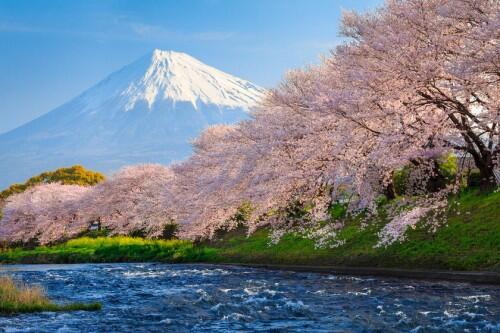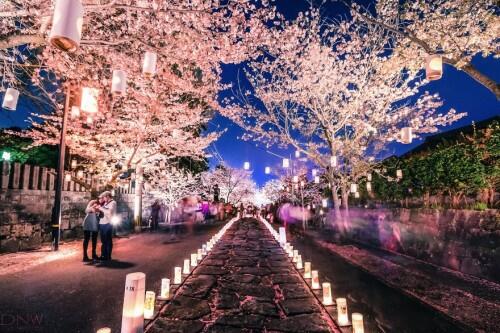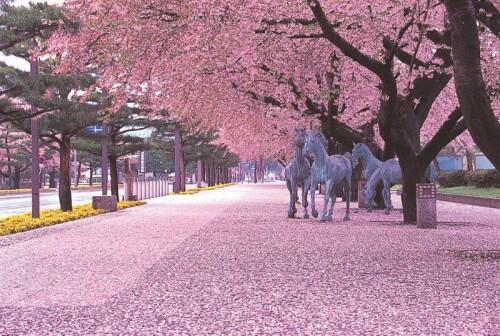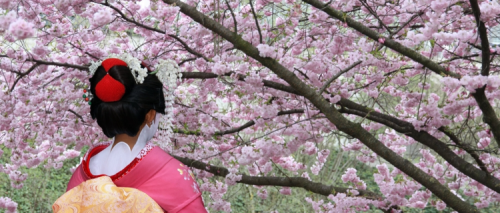The Japanese people continue the tradition of hanami, gathering in great numbers wherever th echerry blossom trees are found. Thousands of people fill the parks to hold feasts under the flowering trees, and sometimes these parties go on until late at night. In more than half of Japan, the cherry blossoming days come at the same time as the beginning of school and work after vacation, and so welcoming parties are often opened with hanami. Usually, people go to the parks to keep the best places to celebrate hanami with friends, family, and company coworkers many hours or even days before. In cities like Tokyo, it is also common to have celebrations under the sakura at night. Hanami at night is calledyozakura (夜桜, literally “night sakura“). In many places such as Ueno Park, temporary paper lanterns are hung to have yozakura.
The cherry blossom front is forecast each year, previously by the Japan Meteorological Agency and now by private agencies, and is watched with attention by those who plan to celebrate hanami because the blossoms last for very little time, usually no more than two weeks. The first cherry blossoms happen in the subtropical southern islands of Okinawa, while on the northern island of Hokkaido, they bloom much later. In most large cities like Tokyo, Kyoto and Osaka, the cherry blossom season normally takes place around the end of March and the beginning of April. The television and newspapers closely follow this “cherry blossom front”, as it slowly moves from South to North.
Pictures from various sources

